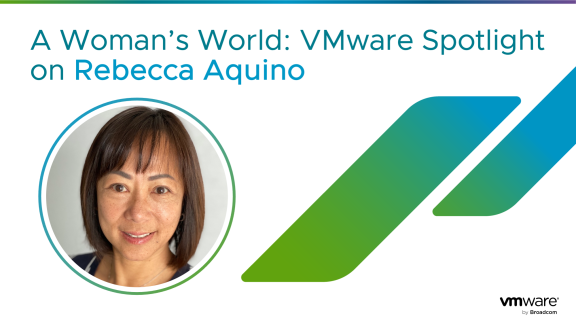If you work in IT, you know the importance of load balancers. Load balancers, or application delivery controllers (ADCs), enable networks to perform faster and provide network resiliency by directing internet traffic across multiple servers to allow applications to scale.
Without load balancers, applications may fail and negatively impact end users in cases of overloads, cyber threats, or hardware issues. They ensure applications are delivered securely and efficiently to end users.
Most organizations today run a mix of applications based on microservices architecture and traditional applications across multiple clouds, and load balancers help manage this complexity without adding excess costs. Read on for tips to make sure your load balancers are optimized for your environment and use cases.
#1: Starting with business goals and application requirements
Today, many organizations place more importance on the implementation of the technical load balancing solution than on the business use case requirements and goals. It’s important to focus on desired business outcomes, improving security, ecosystem complexity, and minimizing costs. Also consider factors including application traffic behavior, high availability, network visibility, geographic locations, performance, and integrations with third-party vendors.
#2: Choosing a load balancer that works across multiple clouds and platforms
Modern applications need to run on multiple platforms and load balancing solutions must support this requirement. Organizations need a load balancer that uses a distributed architecture specifically designed for multi-cloud application services. Solutions should be elastic and scalable in nature with a central control plane and a separate distributed data plane. With this type of solution, load balancing happens through an application programming interface (API) for real-time automated provisioning and operations.
#3: Protecting web applications on any cloud against cyber threats
In addition to managing at scale, load balancers can also contribute to the security of applications. Advanced load balancers are designed to keep traffic secure while minimizing hardware usage. Because many attacks happen at the application layer, organizations should have an application layer firewall in addition to a standard firewall to mitigate possible cyber attacks.
We want to protect business data and services and deliver real time web application security consistently on any cloud. Monitoring, filtering, and inspecting HTTP traffic is a critical part of security best practices and can prevent and defend against web application attacks. Look for intelligent web application firewall (WAF) features integrated within the load balancing solution for easy deployment and central security management.
#4: Modernizing applications with containers
Many applications are already running on containers or will soon be migrated to containers. Ensure that your load balancing solution includes support for containerized applications with microservices architecture, meets your application requirements, and is appropriate for your use case. Capabilities like performance monitoring, security, traffic routing, and local and global load balancer support for containers need to be considered.
Many load balancer solutions include an ingress controller for Kubernetes to accept internet traffic and load balance it to applications.
#5: Ensuring minimal downtime with on-demand and secure autoscaling
The biggest reason to properly deploy and integrate load balancers is to ensure minimal downtime and optimal network performance. In this era of always-on business, organizations depend on instant access to applications at all times. Downtime can affect productivity and revenue as well as brand reputation and customer retention.
A load balancer should be capable of managing the maximum number of connections a network receives at any given time. It needs to prioritize business-critical applications and architected to be responsive to spikes in activity. Examples of this include when there’s a rush of prospective students submitting an application on deadline day or when retail outlets receive a majority of online orders for the year around the holidays.
Load balancers should offer flexible, elastic solutions to easily scale up or down based on real-time demand and traffic patterns. Load balancer solutions must also be incorporated in network and security operations and be managed through centralized processes with simplified troubleshooting.
#6: Ensuring business continuity
Companies who manage global applications in multiple environments require a global load balancing solution to distribute users’ requests, reduce latency, ensure high availability, optimize resource use, and provide optimal application performance regardless of where end users are located.
Organizations should always make high availability (HA) a priority when designing a load balancing solution. More than one load balancer is recommended to avoid creating a single point of failure. In the case of multiple data centers, at least two load balancers are recommended for each site in addition to including a Global Server Load Balancer (GSLB). This makes it easier to manage traffic securely and smoothly for users distributed across geographies and data centers.
A good load balancer will meet performance requirements and fit into your networking architecture. Consider using a GSLB to provide failover between multiple sites if this scenario applies to your environment.
#7: Determining vendor support for a load balancing solution
Ask your load balancing vendor how they can help you determine the design and deployment of the load balacing solution aligned with your business case and unique IT environment. Vendors should be able to discuss success stories and options for deployment types including on-premise, cloud, managed services, and additional options available.
Some organizations may also want a third party or vendor to manage and be responsible for load balancer and network operations and maintenance. Ensure that the load balancing vendor you choose is able to integrate fully with other third-party solutions and vendors that may be part of your ecosystem.
#8: Training your staff for optimal expertise
Evaluate your current network and security teams skills sets and ask your team about their experience with load balancing design and deployment. Ask your vendor about training courses, certifications, and continuing education options during your implementation.
#9: Reducing CapEx and OpEx through cost analysis
When choosing a load balancing solution, always perform a cost analysis to consider capital expenditures (CapEx) and operating expenses (OpEx). The assessment of current hardware load balancers servers, licenses, power, physical area, operation and maintenance time required, and troubleshooting required will help to determine your best option. Ask your vendor candidates to provide or help you with a cost analysis based on your infrastructure, business uses case, and application requirements.
#10: Understanding licensing options
Make sure to understand vendor load balancing licensing models and costs with the adoption of any SaaS or subscription licenses, which may be very different from previous on-premise pricing. Consider future needs such as services and applications growth and possible evolution within the years that your load balancing solution will be effective.
Learn more about networking and security for your multi-cloud environment
Read the recently published case study from IDC on the value of VMware NSX Advanced Load Balancer, and for more information about load balancing for multi-cloud environments, check out the Multi-Cloud Load Balancing for Dummies ebook.
Visit Professional Services for Networking to learn more about how we can help you evolve and optimize your network with VMware NSX Advanced Load Balancer, and ask us about additional support available including health check, design, deployment, and migration consulting services. Contact us to get started on your journey.






